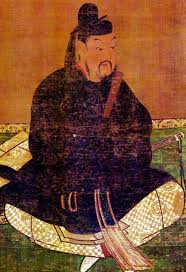



There, Maro launched a project to construct an embarkment to better manage the water flow in the valley. 7th century AC) came to rule Hitachi-no-kuni (modern day most of Ibaraki Prefecture) as a statecraft ruler dispatched by Emperor Kōtoku thus, Matachi’s rice fields and the land around it naturally became his property. This confrontation with Yatsu-no-kami, however, didn’t end with Matachi.Īfter many years later, another noble by the name of Mibu-no-Maro (circa Mid. twenty-four acres large rice field and a shrine was built to honor Yatsu-no-kami which is today’s Tenryūzan-atago Shrine ( below) in Namegata City. For we shall venerate and worship you forever, I ask you all to not seek vengeance and harm us.”Īlas, Matachi successfully established an approx. Tenryū saying: “Anywhere beyond this point is your territory while anywhere before where I stand is our territory for humans. As Matachi literally beat the serpent deities into retreat, he drove the same stick he used as weapon through a mound to mark the boundary separating Yatsu-no-kami’s and human’s domain at the entrance of Mt. Angered, he armed himself with a stick and armor then charged towards Yatsu-no-kami. Yatsu-no-kami didn’t approve of this landscaping project and began harassing Matachi.

In the text, Yatsu-no-kami were fearsome deities that a person’s entire family would die out just from looking at them, but it turned out that this wasn’t the case for the two characters in this legend who promptly defeated them.įirst was Yahazu-no-Matachi (circa 6th century AC) ( below) who was the noble of ancient Namegata that established new rice fields in the West through reclamation of the plateau near the valley. According to “Hitachi-no-kunifudoki” (721), Yatsu-no-kami are said to be deities of snake with a pair of horn growing from their head that are native to today’s Rokkō area especially within Namegata City (Ibaraki Prefecture). Please join in the festival! You are welcome to send the gods to the top on the final day together and can also, purchase special paper from the Washi factories during that time at Washi-no-Sato Street.Yatsu-/Yato-no-kami ( above) are one of the many serpent deities in Japanese mythology. And at 8:00pm in the evening the ceremony begins for the gods’ departure of the village and people send them off by climbing up to the top of the mountain with fire and candle lanterns. On the second day, children act out a special drama inside the shrine which is about how we learned paper from the paper goddess, Kawa-kami Gozen.Īnd on the final day, people carry the gods in a portable shrine, Mikoshi, for the others' greetings to the gods. The local people start gathering at the shrine waiting for their coming at about 5:00pm to 6:00pm until they are enshrined. On the first day in the evening, people go up to the mountain to welcome the gods down to the shrine with drums. Usually the paper goddess, Kawa-Kami Gozen ( see History of Echizen) and the two local gods stay up in the mountain, but for the event, they will come down to the Okamoto Otaki Shrine to stay down here for three days, May/3,4,5, just during the festival. Every spring, there is a unique festival that here in Washi-no-Sato that is related to the history of paper. In Japanese, kami can mean either god or paper.


 0 kommentar(er)
0 kommentar(er)
